Last weekend saw a celebration of old cultivars and varieties of both fruit and vegetables. At Diggers Heronswood, Dromana it has been the Harvest Festival Weekend with a really beautiful array of pumpkins and squashes, garlic for sale and tomatoes to taste. Nearly all of these are heirloom or open pollinated varieties that are so important both for our gardening history and our future. Heirloom and heritage varieties are an integral part of organic gardening, many are the result of selective breeding over numerous generations so that they show special characteristics.
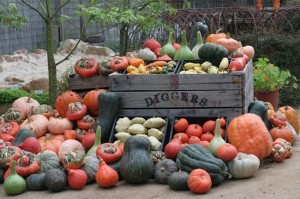
Turk's Turban, Delicata, Potimarron, Australian Butter, Buttercup and Bohemian are just a few of the heirloom varieties of pumpkins available to grow.
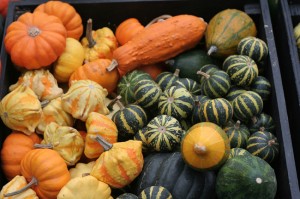
Heirloom varieties of squash, gourds and small pumpkins
Read more
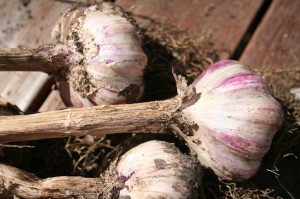
Garlic 'New Zealand Purple' is a more cold tolerant variety
Now is the time to plant garlic. Don’ t wait until the shortest day as this is generally too late. Anytime from now until the end of May is fine.
I am planting some early garlic now, and in another month some of my home-grown from last year and a month after that some more. I want to make sure that I have my own fresh garlic available all year round.
Why grow your own?
— We are all used to the idea that tomatoes eaten straight from the garden taste so much better than the supermarket variety. Well the same is true for garlic.
— Garlic is easy to grow and takes up very little space.
— All imported garlic is sprayed with methyl bromide when it comes into Australia, not only does methyl bromide deplete ozone, but it is also harmful to humans. As well as this, much of our imported garlic comes from China where pesticides are routinely used, and only 5% of vegetables imported from China are checked for chemical residue. Read more
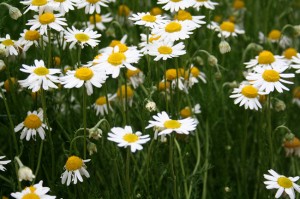
Perennial chamomile adds calcium and ‘sweetens’ the compost.
Just as the success of a meal depends on the quality of the ingredients, so too does the success of a compost heap. If you add only kitchen scraps you’re likely to end up with a slimy, black mess and if it’s all leaves and twigs then the chances are that is what will still be there months later. The fine detail of a compost recipe varies depending on the expert you are consulting, but all compost systems require free drainage, adequate moisture and a mixture of strawy, open material and green plant tissue. The purpose of composting is to break down garden and kitchen ‘waste’ into humus that can then be added to the garden to supply nutrients in a form that can be readily used by plants. Read more
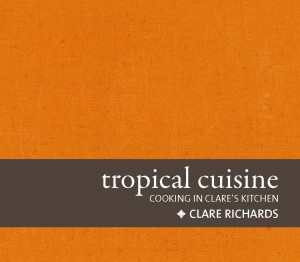 Tropical Cuisine by Clare Richards is a revelation. It is obviously the work of a lifetime spent travelling and cooking and asking questions. It is encyclopaedic without being daunting; innovative without being ridiculous; beautifully photographed by Alison George and very well laid-out. It is, surprisingly, self-published, without the design faults usually accompanying such projects – the mark of an author who is open to good advice. All round, Tropical Cuisine is an investment worth making, no matter where you live in the world. It ranges across the Antipodes, Asia and the Middle East, and is up-to-the-minute in terms of food trends in our changing culture (brilliant recipes for goat and a good grip on the bounty of Asian herbs vegetables, which we don’t use enough of in Australia). Clare Richards is good at research and documentation, and it shows. If you are buying just one cookbook this year, make it this one. – AMS.
Tropical Cuisine by Clare Richards is a revelation. It is obviously the work of a lifetime spent travelling and cooking and asking questions. It is encyclopaedic without being daunting; innovative without being ridiculous; beautifully photographed by Alison George and very well laid-out. It is, surprisingly, self-published, without the design faults usually accompanying such projects – the mark of an author who is open to good advice. All round, Tropical Cuisine is an investment worth making, no matter where you live in the world. It ranges across the Antipodes, Asia and the Middle East, and is up-to-the-minute in terms of food trends in our changing culture (brilliant recipes for goat and a good grip on the bounty of Asian herbs vegetables, which we don’t use enough of in Australia). Clare Richards is good at research and documentation, and it shows. If you are buying just one cookbook this year, make it this one. – AMS.
To purchase a copy go to any good bookstore or Clare’s website
Tropical Cuisine: Cooking in Clare’s Kitchen by Clare Richards, Wet Season Press, Australia 2010 $59.95
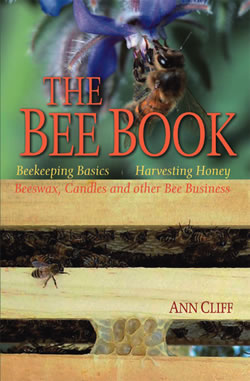 The Bee Book by Ann Cliff. At last an Australian book on keeping bees. Ann Cliff has had a lifetime of involvement in sustainable gardening and bees play an integral part. In this book she looks at native and European bees, then moves on to beekeeping basics, honey harvesting and beeswax, candles and other bee business (including how to make mead!). It’s not a glossy, coffee table book, but simple and straightforward with detailed information on where to get your bees, who to go to for help and other essential resources. If you are thinking of keeping your own bees this book would be a great place to start.
The Bee Book by Ann Cliff. At last an Australian book on keeping bees. Ann Cliff has had a lifetime of involvement in sustainable gardening and bees play an integral part. In this book she looks at native and European bees, then moves on to beekeeping basics, honey harvesting and beeswax, candles and other bee business (including how to make mead!). It’s not a glossy, coffee table book, but simple and straightforward with detailed information on where to get your bees, who to go to for help and other essential resources. If you are thinking of keeping your own bees this book would be a great place to start.
Borrow a copy from your library, buy one from your local bookshop or go to the store on this website and buy a copy online
The Bee Book, Ann Cliff, Manna Press, 2010, RRP $21.95






